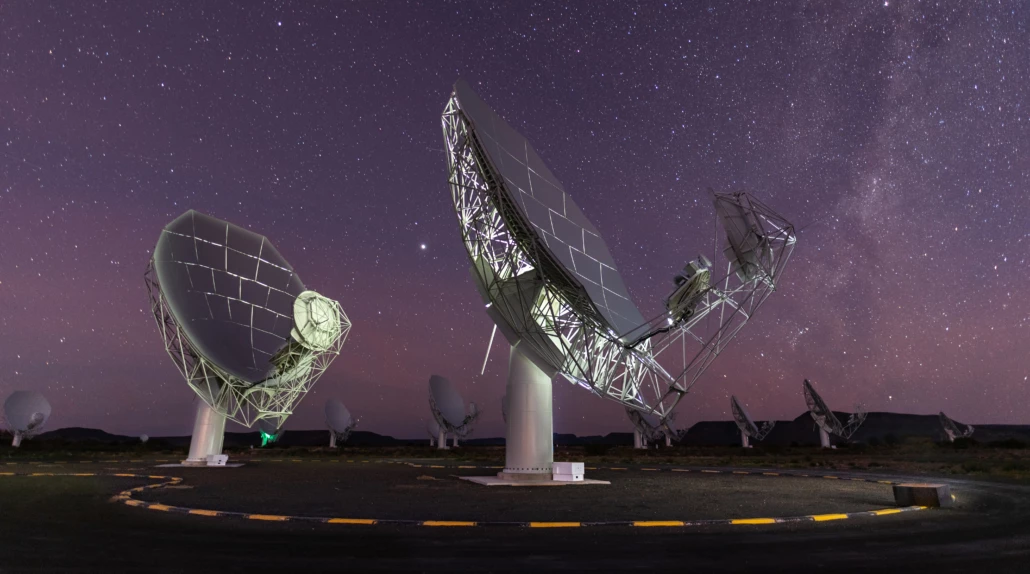Scientists working with the Breakthrough Listen initiative have a powerful new tool at their disposal. A new instrument integrated into the Southern Hemisphere’s largest radio telescope has given it the capabilities to detect technosignatures of extraterrestrial intelligence, significantly widening the net in the search for alien life.
The South African Radio Astronomy Observatory's MeerKAT radio telescope is located in the remote Karoo region of South Africa, and since capturing its first light in 2016 has expanded our view of the cosmos by unearthing and analyzing thousands of galaxies. It relies on an array of 64 dishes to study huge expanses of the sky, which is of great interest to researchers working on Breakthrough Listen, a research program aimed at uncovering evidence of life beyond Earth.
Breakthrough Listen currently does this by searching for so-called technsignatures with the Green Bank Telescope (GBT) and Automated Planet Finder in the US, and the Parkes Telescope in Australia, scanning the sky for messages that might be sent by extraterrestrial intelligence. For the past three years, the team’s astronomers and engineers have been working to bolster these efforts with a powerful new computer cluster for use with the MeerKAT telescope.
The team announced on Thursday that observations have now begun with what it calls the most powerful digital instrumentation ever deployed in the search for technosignatures. Conveniently, it is able to aid the team’s search without mechanically moving the MeerKAT telescope's antennas, instead using computer processing to gain a new perspective of what is already in view.
“MeerKAT consists of 64 dishes, which can see an area of the sky 50 times bigger than the GBT can view at once,” explained Breakthrough Listen Principal Investigator Dr. Andrew Siemion. “Such a large field of view typically contains many stars that are interesting technosignature targets. Our new supercomputer enables us to combine signals from the 64 dishes to get high resolution scans of these targets with excellent sensitivity, all without impacting the research of other astronomers who are using the array.”
This will enable the Breakthrough Listen team to leverage the MeerKAT telescope’s capabilities nearly 24 hours a day, and increases the number of targets it can study by a factor of 1,000. Among its initial targets will be the closest star to our solar system, Proxima Centauri, which astronomers believe may be orbited by potentially habitable Earth-sized planets.
“One of the first targets we’ll be observing is our nearest neighbor star, Proxima Centauri, which appears to host two small rocky planets in the star’s habitable zone,” said Breakthrough Initiatives Executive Director, Dr. S. Pete Worden. “Routine observations with the Listen backend on MeerKAT are now underway, and the team looks forward to sharing the first science results in the coming months.”




